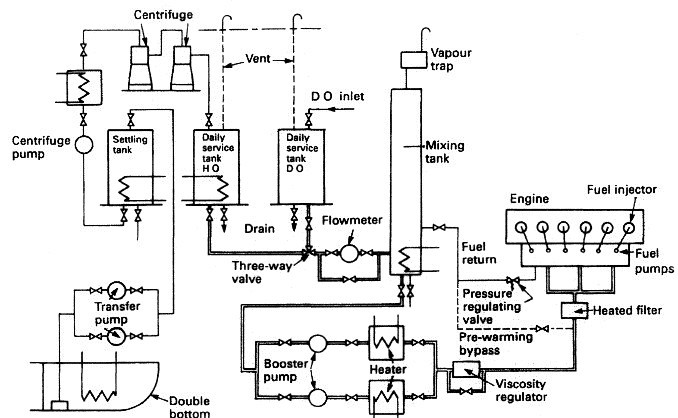
Fuel Oil System for Marine Diesel Engine
The fuel oil system for a marine diesel engine can be considered in two
parts—the fuel supply and the fuel injection systems. Fuel supply deals with
the provision of fuel oil suitable for use by the injection system. Marine Fuel oil system includes various piping systems provided for bunkering, storage, transfer, offloading
and treatment of fuel oils.
Fuel oil transfer system – This system receives and stores fuel and delivers it to settling tanks. Fuel oils are loaded through deck fill connections that have sample connections provided to permit the fuel to be sampled as it is taken aboard. HFO is loaded in storage tanks fitted with heating coils.
Fuel oil transfer system – This system receives and stores fuel and delivers it to settling tanks. Fuel oils are loaded through deck fill connections that have sample connections provided to permit the fuel to be sampled as it is taken aboard. HFO is loaded in storage tanks fitted with heating coils.


